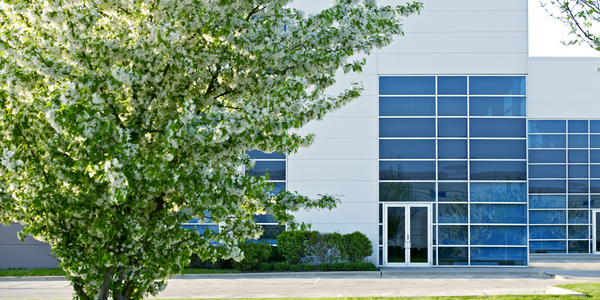Applicable Industries
- Cement
Applicable Functions
- Sales & Marketing
Use Cases
- Vehicle-to-Infrastructure
About The Customer
The customer in this case study is MINI, a renowned automobile manufacturer. MINI's Global Marketing function is responsible for defining its brand strategy and creating assets, campaigns, and structures for markets to activate. However, it does not purchase any media itself, which led to a lack of coherent data, insight, or feedback loop around how the Global strategy and assets were supported in the market, or how they performed. This was a significant challenge for the company as it hindered the ability to make informed investment decisions, which was crucial for the company's growth and success.
The Challenge
MINI's Global Marketing function was faced with a significant challenge. Despite defining its brand strategy and creating assets, campaigns, and structures for markets to activate, it did not purchase any media itself. This resulted in a lack of coherent data, insight, or feedback loop around how the Global strategy and assets were supported in the market, or how they performed. The absence of a comprehensive system to generate rich, ongoing insights into marketing performance and its impact on sales was a major obstacle. This situation hindered the ability to make informed investment decisions, which was crucial for the company's growth and success.
The Solution
To address this challenge, a MINI Marketing Dashboard (MMD) was created over a two-year period. The MMD was designed to enable the Global Marketing function to generate rich, ongoing insights into marketing performance and its impact on sales. The development of the MMD involved a strategy and roadmap creation, and building the infrastructure needed to manage all of MINI’s marketing and sales data across its top 20 markets. This process was carried out in four key stages: Data Consolidation, Holistic Reporting, Deeper Understanding, and Advanced Analytics. The MMD solution consists of six functions, all answering different questions with a range of end users, from C-suite marketers to retailer managers. Beyond the vision, the MMD has an established, ongoing process to ensure learnings are understood and scaled out to the stakeholders that need it most.
Operational Impact

Case Study missing?
Start adding your own!
Register with your work email and create a new case study profile for your business.
Related Case Studies.

Case Study
System 800xA at Indian Cement Plants
Chettinad Cement recognized that further efficiencies could be achieved in its cement manufacturing process. It looked to investing in comprehensive operational and control technologies to manage and derive productivity and energy efficiency gains from the assets on Line 2, their second plant in India.

Case Study
Digital Transformation of Atlanta Grout & Tile: An IoT Case Study
Atlanta Grout & Tile, a Tile, Stone & Grout restoration company based in Woodstock, Georgia, was facing challenges with its traditional business model. Despite steady growth over the years, the company was falling behind the web revolution and missing out on the opportunity to tap into a new consumer base. They were using independent software from different vendors for each of their department information and workforce management. This resulted in a lot of manual work on excel and the need to export/import data between different systems. This not only increased overhead costs but also slowed down their response to clients. The company also had to prepare numerous reports manually and lacked access to customer trends for effective business decision-making.

Case Study
Revolutionizing Construction Equipment Rental: A Case Study on ProsRent and ENO8
ProsRent, a startup that won the 'Best Financial Opportunity' and 'Best Pitch' at CodeLaunch 2016, aimed to revolutionize the way construction professionals source and rent heavy equipment. In the construction industry, project managers and contractors typically rent heavy equipment from supply companies. However, predicting inventory can be challenging, and finding the required equipment at the right time and place can be a hassle. If the preferred vendor doesn't have the required equipment, it results in wasted time and money in searching for it, often leading to higher costs due to non-preferred rates and increased delivery costs if the vendor is located far from the job site. Suppliers, on the other hand, desired access to a wider base of trusted renters that they didn't have to vet themselves and wanted to offer dynamic rental pricing based on demand and availability in their market. ProsRent's challenge was to produce a minimum viable product that was fast and first to market but also strong enough to engender loyalty and repeat business from the target market.

Case Study
AI-based Automation for Commercial Office HVAC: A Verdigris Case Study
Modern buildings are required to run longer hours, support a variety of end uses, and contribute to higher levels of economic productivity, leaving a thin margin for error. However, even the most advanced building and environmental control systems have failed to adequately support facilities and operations management. Buildings are often inefficient and the people using them are underserved. To meet occupant comfort and maintain cost and energy efficiency, a dynamic, AI-assisted approach is needed.

Case Study
Revamping EE's Legacy ERP: A Case Study on BT's Strategic Transformation
EE, even after its merger with BT, was operating its ERP estate on legacy infrastructure, hosted on the premises of a third-party supplier. This outdated system resulted in a volume-based operational model, higher time to market, longer delivery cycles, and unsatisfactory customer experience. BT recognized the need for a strategic transformation of these aging ERP systems and sought a partner who could proactively manage application services. The partner was also expected to handle development requirements associated with application management services, drive accountability, and ownership with a time and target-driven transformation of these services. BT's primary goals were to improve customer experience, reduce cycle time, and measure these improvements with precision.








